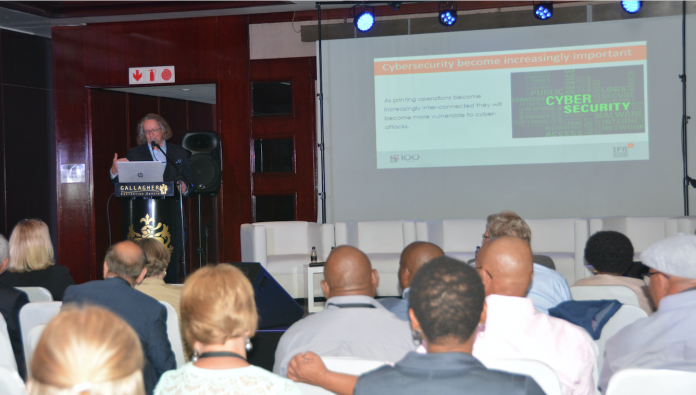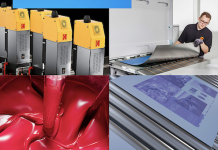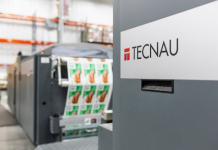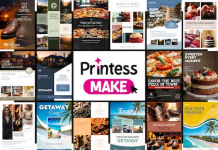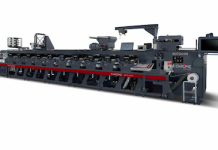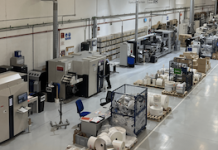The Printing SA Conference, held from 11-12 September alongside the Africa Print Expo, was an opportunity for industry stakeholders to unpack the vital role that the industry plays and to debate the future of the industry in light of the ever changing landscape due to technological advancements taking place around the world.
Dr Morne Mostert, Director of the Institute for Futures Research, presented the findings of his research report. He said that the printing industry is fragmenting and that it is being redefined. The industry is also moving from large labour intensive single locations to large capital intensive places. ‘This has serious implications for how organised labour organises itself,’ said Mostert. Another challenge is the change in how people consume information – printers need to understand the shifts in consumer preferences.
However, despite these challenges, there are positives. ‘What you can print on is exploding, and this presents so much opportunity for the industry,’ said Mostert. ‘There is also a shift towards a hyper-connected and hyper-distributed printing industry.’ Business diversification and strategies to maximise these opportunities are key.
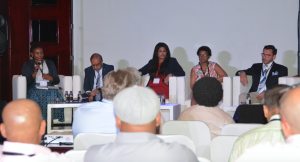
One printer on the conference’s discussion panel who is diversifying is Vrajlal Harry, MD of Celglade Investments, trading as Harry’s Printers. The company was established in 1929 and is the largest printer in the Eastern Cape. As part of Harry’s extensive research on innovation, he has travelled abroad to consult with innovative printing companies and leaders in innovation. ‘Successful CEO’s are spending 50% or more time on innovation,’ he said. ‘Print companies that are thriving have embraced IT or marketing services and they’ve experienced good margins and increased employment.’
Sean Holt, Executive Director, FESPA, addressed the topic ‘Gen Z – The Future Workforce’, stating that printing companies need to be attractive to this workforce. Companies need to work hard to combat the perception that the printing industry is a ‘dirty business’ and a ‘declining industry’. ‘We need to communicate that printing is a high-tech, highly-skilled, creative, exciting and dynamic industry. We need to make careers in this industry an attractive proposition to Gen Z – this will sustain the industry,’ said Holt.
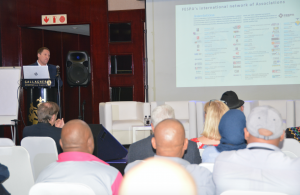
So what does Gen Z want?
– Opportunities for advancement.
– They’re motivated by job security and money.
– They’re willing to work hard for the right organisation.
– Flexible working environments – things like being able to work from home as well as flexi-time.
– Constant feedback and close relationships with their superiors.
How we communicate about the printing industry was another point shared during a panel discussion. This not only applies to making the industry attractive to Gen Z, but it also applies to getting useful stakeholders on board to support the industry. ‘FESPA believes phrasing it as the visual communications business, which is broad, and not ‘the printing business’, which sometimes has negative connotations. Our language use is important,’ said Holt.

Panellist Steve Thobela, Novus Print: Executive – South, agreed: ‘When we mention ‘printing’, people think of ink and a dirty and old industry, but when we rephrase it as ‘communication and marketing’, people want to get on board with projects.’
Representatives from government, business, labour – including the South African Typographical Union and the Federation of Unions of South Africa – as well as a variety of stakeholders, shared their views during panel discussions. These discussions represented what should be happening: collaboration and effective communication between stakeholders to ensure the sustainability and future of the industry.
Printing SA CEO Dr Abdool Majid Mahomed Mahomed said, ‘Partnerships will not only create jobs, it will ensure stability and growth. The emphasis should be on building trust, holding government accountable, engaging proactively with policy and regulation development, and advising on trade, duties and tariffs. The new African Free Trade agreement that is being mooted, has to be used to our advantage.’
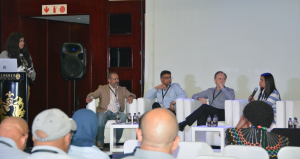
Summarising some of his insights from the conference, Dr Mahomed, said, ‘While the printing industry is bleeding jobs, all is not doom and gloom. It is definitely not dying, but merely transitioning or transforming, and continuously evolving. Through the use of appropriate technologies that are now available, and innovation at its heart, it now offers new types of communication channels on various substrates, to a new customer that wants things here and now, and packaged individually.’
‘We are moving from traditional printing machines, to more digital print on demand. While paper is still at the heart of it, there is a move from paper to ‘vapour’ – that is in the cloud, online and on various textures including glass, plastic, wood, rubber, aluminium, steel, textiles, footwear, wrap arounds for vehicles and trucks, billboards, etc. While printing will still happen, it will happen everywhere.’
He said that while printing will still use inks of all sorts, it is moving to a more high-tech industry, requiring highly skilled and creative designers, marketers and IT specialists. ‘It is a dynamic and exciting space and we need to encourage learners and workers to enter the industry with appropriate skills and learning tools, enabling them to future-proof themselves.’
PRINTING SA (+27 11) 287 1160 info@printingsa.org http://www.printingsa.org


